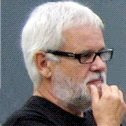Pulhams produced a prospectus in 1877 listing the gardens they had worked on up to that date including six in Sydenham and two in Forest Hill. Most of these gardens can be identified, and one or two Pulhamie structures have survived. In each case the site name, completion date and client is given. With the name of the client it is relatively easy to identify where these grottos and follys were built.
“Hill Wood, Sydenham Hill; 1863, 1866; Alderman Stone”
This is the folly in Sydenham Hill Woods. Alderman David Henry Stone, one time Lord Mayor of London, lived at Fairwood, 53 Sydenham Hill from 1864 (when the house was built) until about 1869. Fairwood was immediately to the south of Beechgrove.“(Site in) Sydenham Hill, SE26 (may be Kingswood House?),London; 1870; L Clark”
This was not Kingswood, it was actually Beechmount, later Hitherwood, 19 Sydenham Hill near the lane that goes past the old reservoir to College Road (?Rock Hills). It was occupied by Latimer Clark, a civil engineer, between about 1864 and 1882.“(Site in) Sydenham Hill, London SE26; 1874, 1875; Dr Barry”
This is the surviving Fountain House, 17 Sydenham Hill which still has an extraordinary fountain surviving the back garden. "Dr Barry" was Dr John Boyle Barry, a surgeon who lived at the house between 1871 and 1879.“(Site in) Sydenham, London SE26; 1869; H Gover”
This was the surviving Lyncombe, 1 Crescent Wood Road, occupied by Henry Gover, a solicitor, from before 1871 until 1895. There is something that might be the remains of a folly visible from the path to Sydenham Hill station.
“(Site in) Sydenham, London SE26; 1869; W J Mace”
This was somewhere on the Lawrie Park estate,but I'm not sure where.
“(Site in) Sydenham Hill, London SE26; 1869; F Peek”
Francis Peek lived at 21 Sydenham Hill until 1869 then moved to 7 Crescent Wood Road so I suppose it could be either of those.
“(Site in) Forest Hill, London SE23; 1865; J Fielding”
This was The Grange, Honor Oak Road (between Benson and Ewelme Roads) where John Crossley Fielding lived between 1854 and 1878. He also used Owen Jones to decorate his drawing room.“(Site in) Forest Hill, London SE23; 1869; H Moser”
Henry Moser lived at Westwood Lodge, 70 Honor Oak Road, from about 1862 until 1872. The site is now occupied by a block of flats.
